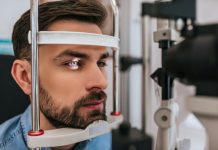
Memory problems are often one of the first signs of cognitive impairment related to Alzheimer’s disease.
The decline in non-memory aspects of cognition, such as word-finding, vision/spatial issues, and impaired reasoning or judgment, may also signal the very early stages of Alzheimer’s disease.
In a study from the University of Pittsburgh, scientists found a new highly selective PET imaging agent that can detect the presence of overexpressed monoamine oxidase-B (MAO-B) in cognitively unimpaired people with high beta-amyloid (Ab).
High Ab is one of the earliest signs of Alzheimer’s disease.
The radiotracer, 18F-SMBT-1, allows for a better understanding of the role of inflammation in Alzheimer’s disease, which can enable more accurate staging and prognosis at earlier stages.
Brain inflammation that accompanies Alzheimer’s disease involves reactive astrocytes, which are cells that overexpress MAO-B.
The newly developed 18F-SMBT-1 radiotracer is highly selective for MAO-B and as a result, has increased binding to reactive astrocytes.
This increased binding suggests that 18F-SMBT-1 can potentially be used as a surrogate marker to detect reactive astrogliosis in Alzheimer’s disease.
In the study, the team aimed to characterize 18F-SMBT-1 binding to reactive astrocytes across the Alzheimer’s disease continuum.
Study participants included 57 cognitively unimpaired people, 12 people with mild cognitive impairment (MCI), and eight people with Alzheimer’s disease.
Participants underwent several types of imaging, including 18F-SMBT-1 PET, Ab PET, tau PET, and MRI.
The three clinical groups were then classified based on their Ab status (either as Ab+ or Ab-).
The team found in the Ab+ people with Alzheimer’s disease, 18F-SMBT-1 binding was much higher.
Most importantly, 18F-SMBT-1 binding was much higher in the Ab+ control group as compared to Ab- control group.
The team says that the brain regions with higher 18F-SMBT-1 binding in the control group are regions known for early Ab deposition.
This suggests that reactive astrocytes are linked to early Ab deposition at the preclinical stages of Alzheimer’s disease and likely play a role in disease development.
The new method has the potential to define and refine the diagnostic, staging, and prognostic roles of reactive astrogliosis in Alzheimer’s disease.
If you care about Alzheimer’s, please read studies about antioxidants that could help reduce the risk of dementia, and 5 steps to protect against Alzheimer’s and Dementia.
For more information about brain health, please see recent studies that herb rosemary could help fight COVID-19 and Alzheimer’s disease, and results showing this stuff in mouth could help prevent Alzheimer’s.
The study was conducted by Victor Villemagne et al and published in the Journal of Nuclear Medicine.
Copyright © 2022 Knowridge Science Report. All rights reserved.



